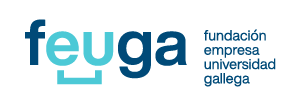Work packages
Work package 1 – Project Management
The Work Package 1 aims to ensure high-quality research and streamline development activities across partners, while meeting time, budget, and quality targets. A management structure and communication platform for efficient decision-making and maintain team spirit will be stablished. They project coordinator will act as a communication interface between the European Commission and other stakeholders to ensure visibility of the project, while monitoring issues related to quality, ethics, and gender.
Who’s in first line?

Related pictures

Work package 2 - Requirements and specifications
The goal of Work Package 2 is to determine the types of electric vehicles and their typical usage patterns in the primary market. The specifications and requirements for components, including volume, interfaces, cycles, and reference vehicles, will be defined for both the design and testing phases.
Who’s in first line?

Work package 3 – Electrical machine design
The primary aim of this work package is to design and virtually evaluate a modular axial flux electric machine, taking into consideration the integration of power electronics, drive system, and thermal management at the sub-system level. Other objectives include identifying available cooling alternatives or improvements, determining their potential to enhance cooling, which can expand the performance range and/or reduce the size and weight of the motor, and proposing a new framework for designing and analyzing electrical machines that integrates specific requirements and steps based on advanced digital technologies, derived from and implementing strategies for reduced rare earth materials and circular economy.
Who’s in first line?

Work package 4 – Digital Twin for optimal control
The main goal of Work Package 4 is to develop a Digital Twin that can predict the performance of prototypes and optimize their control strategy. This digital twin will be based on real-time Low-Order Models using in-house developed libraries, which combine simulation and sensor data using Artificial Intelligence techniques to enhance accuracy. A real-time simulation model will be generated to offer a more comprehensive representation of the axial flux electric motor, which can enhance its control.
Who’s in first line?

Work package 5 – Magnetic Materials and Manufacturing/Recycling Processes for mass production
Work Package 5 focuses on ferromagnetic materials such as Electrical Steel, Soft Magnetic Composites, and Permanent Magnets, along with their associated manufacturing and recycling processes for axial flux electrical machines. The first objective is to provide comprehensive technical, economic, and environmental information about ferromagnetic materials that are essential for the design. The second objective is to design the manufacturing/recycling process flow for the electrical machine, with close interaction with WP3 to ensure a practical product/process-oriented approach.
Who’s in first line?

Work package 6 – Life cycle management
Life cycle management is a cross-cutting activity. It involves the assessment of environmental impacts associated with the project’s developments in a collaborative approach with project partners throughout various phases of the project. This work package will utilize Life Cycle Assessment methodology to evaluate the environmental impacts of technical developments, identifying areas of concern. The ultimate objective is to enable partners to identify critical bottlenecks in terms of environmental impacts and supply risks, leading to informed decision-making in the design and manufacturing of electric machines. As part of this, small-scale or localized Life Cycle Assessments will be conducted during the project, comparing the impacts of the developed electrical machine with an existing reference. The work package will provide recommendations for reducing impacts across various environmental impact categories, with a particular focus on climate change and mineral resource scarcity.
Who’s in first line?

Work package 7 – Drive prototypes Assembly and Testing
There are four primary objectives of this work package. The first objective is to conduct experimental verification of whether the targets, key performance indicators and requirements expressed in the project, and materials resources management & cost are met. The second objective is to assess the simulation tools used and developed by comparing them with the experimental results. The third objective is to evaluate the mass production process flow. Finally, the dismantling and recycling concepts of the electrical machine and materials will be practically assessed. This evaluation will also aid in solidifying the Life Cycle Assessment by using a physical electrical machine as a point of reference.
Who’s in first line?

Work package 8 – Communication, Dissemination & Exploitation
This work package has four key objectives to ensure efficient and effective communication, dissemination, and exploitation strategies tailored to the specificities of the project:
- Communicate the project, its results, and relevance to make them well-known to relevant stakeholders, maximizing the expected impacts.
- Facilitate active dissemination to different target groups, engage relevant stakeholders, and foster dialogue with relevant networks to pave the way for exploitation activities.
- Develop a strategy for Intellectual Property Rights (IPR) and knowledge management, and analyze the best protection routes.
- Develop MAXIMA’s exploitation roadmap, outlining the planned activities for maximizing the commercial, societal, and environmental impact of the project’s outcomes.
Who’s in first line?

